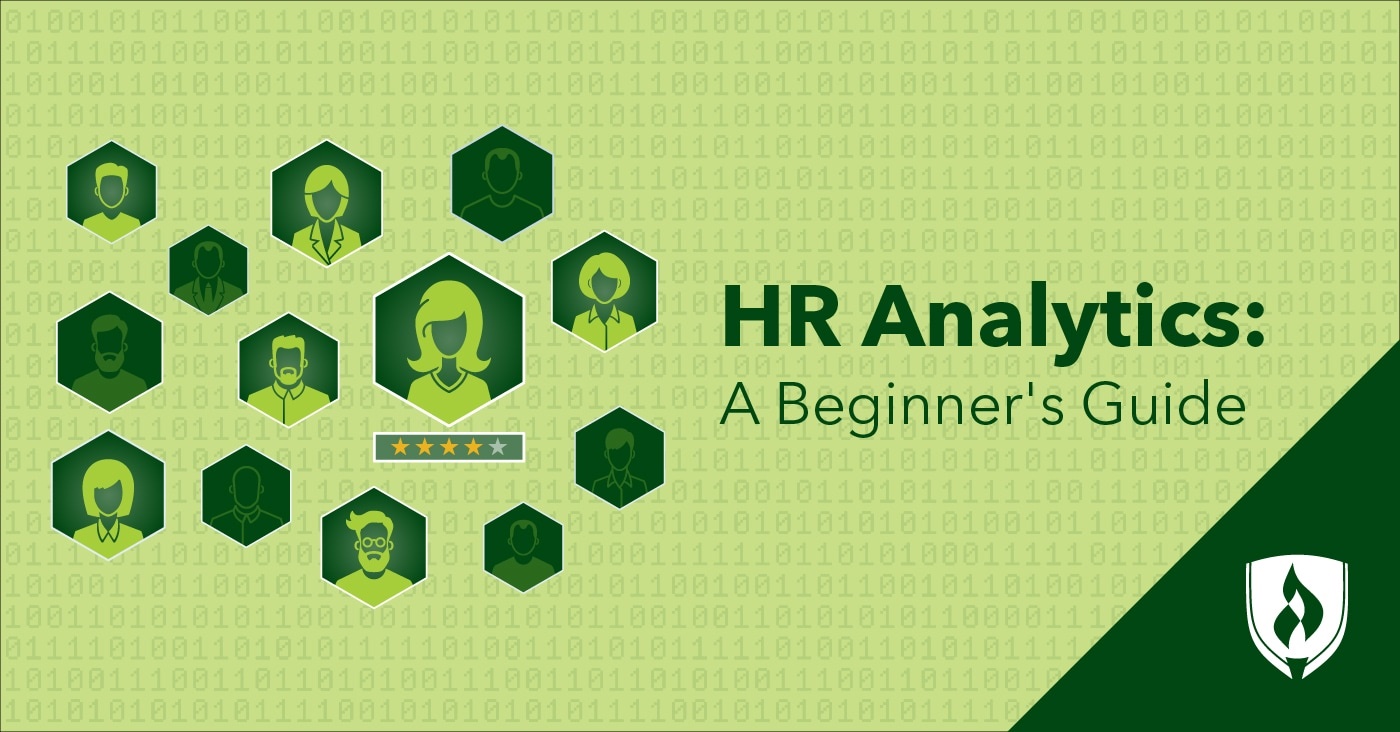
In the 2011 movie Moneyball, we witnessed the real-life story of a professional baseball team’s transformation under manager Billy Beane. At the root of their success was a willingness to eschew conventional wisdom and follow what the quantifiable data collected about the game told them. This approach has since been adopted and imitated countless times across professional sports leagues.
This is a prime example of how data analytics can have a transformational effect on an entire industry—and the human resources (HR) field is no exception.
In the world of human resources, analytics is all about people. Are companies hiring the right people for the right positions? Why do certain jobs create so much employee turnover? Are employees happy with their role? Are businesses inclusive in their hiring practices and nurturing diversity? HR analytics allows us to quantify and explore potential answers to these critical topics.
If you’d like a better understanding of what the landscape of HR currently looks like, read on! We’re going to break down some of the most essential questions about HR analytics and how they impact the workforce today.
What is HR analytics?
Analytics is all about recording data, processing and interpreting it, and then recognizing patterns that will help decision makers do just that: make better decisions. HR analytics allows an organization to measure various HR metrics (more on these specific metrics later), which help companies hire and retain the right people for the right jobs.
Take job turnover as an example. Losing an employee and having to hire and train a new one can be a very expensive process for a company. Using analytics, human resources departments are able to collect data points connected to employee satisfaction, productivity and engagement. These data points then allow a company to look closer at the job, the people they are hiring and the health of the team to process what is happening and create long-term solutions.
Data allows business leaders to make informed decisions based on more than just gut feelings or assumptions.
How do HR analytics help a business?
Despite still being a relatively novel industry, HR analytics already has a noticeable, positive impact on businesses. Here are four of the biggest reasons that HR analytics can benefit a business right away:
- Cost savings
In business, money is the bottom line. HR analytics has been shown to help cut costs of hiring, pay employees more fair salaries and put employees in the best position to help a company thrive. - Improves talent acquisition
HR analytics can immediately help companies understand which traits of employees would thrive most in a position, as well as what it might take in an offer to get them to come aboard. - Improving performance evaluation and management
Using information like performance data, engagement rates, absenteeism, trainings completed and more can provide a quantified view of employee performance that can help managers move beyond the subjective when gauging an employee’s work. - Monitoring retention and turnover trends
Having a snapshot view into employee retention trends provides an important starting point for identifying potential problems. For example, is one challenging personality in management running off good employees on a team with high turnover?
What are some of the main metrics used in HR analytics?
HR analytics efforts typically fall into one of three buckets: Descriptive, predictive or prescriptive.
Descriptive analytics looks at what is currently happening in a company. This can be something like the current roster of employee demographics, company turnover or advancement rates, or the amount of time it generally takes to fill a new position.
Predictive analytics looks into the future. Using descriptive analytics as a first step, predictive models take the next step by attempting to make predictions on which positions will experience a higher turnover, which traits of employees thrive in certain roles or what an employee’s longevity will be. It may be helpful to think of predictive analytics like a weather forecast—a 60 percent chance of rain doesn’t guarantee rain, but it can still help you decide what to wear.
Prescriptive analytics is about making solutions for the present based on your predictions. How will your company deal with a high projection of turnover? How will you emphasize certain skills or traits in a new hire? In the weather forecast example, prescriptive analytics will help you put an action to your predictions, perhaps indicating that today is a good day to grab an umbrella when you walk out the door.
Let’s use all three of these metrics by looking at an (HP®). HP used descriptive analytics to identify that they had a 20 percent turnover rate in some of their sales divisions, and the average employee tenure lasted somewhere between four and five years.1 With a large company like HP, this level of turnover and the associated replacement costs add up. With predictive analytics, they were able to create a “flight risk” model for employees that weighed common factors for moving on. This predictive model found that employees who were getting promoted without a substantial raise were statistically much more likely to quit.
With prescriptive analytics, HP could then work out retention strategies like engaging directly with these employees with future plans, increasing compensation and more. In the end, HP saved an estimated $300 million by applying these different analytics approaches.1
How do organizations start using HR analytics?
For starters, they’re going to need a tool for gathering and compiling HR-related data. Implementing a human resources information system (HRIS) is a great fundamental building block, particularly for providing descriptive analytics–level insights. There’s a big variety of HRIS platforms available, with some offering specialized features for common analysis focus areas.
Gathering data and producing simple reports is just a first step, though. It takes both practical and technical knowledge to create predictive models. While most HR professionals are not going to be personally crafting an analytics algorithm based on HRIS data, well-educated HR leaders who understand how to interpret these reports, weigh their potential limitations and apply what they’ve learned are needed. Analytics reports and models are simply tools for organizational leadership—they need to be in good hands to truly be effective.
Driving change through data
HR analytics is here to stay. Companies are going to continue to look for ways to refine and reform the analytical process with the end goal of increased employee satisfaction, better profitability and a better product or service for the world to enjoy.
Do you have a passion for people and leading an organization through complex, data-based changes? If so, it may be time to consider taking the next step in your education. For more food for thought, check out “Why Earn a Human Resources Master’s Degree? 6 Reasons to Consider.”
1Erik van Vulpen, “Predictive Analytics in Human Resources: Tutorial and 7 Case Studies,” Academy to Innovate HR, [accessed July 2022], https://www.aihr.com/blog/predictive-analytics-human-resources/.
HP is a registered trademark of HP Hewlett-Packard Group LLC.




